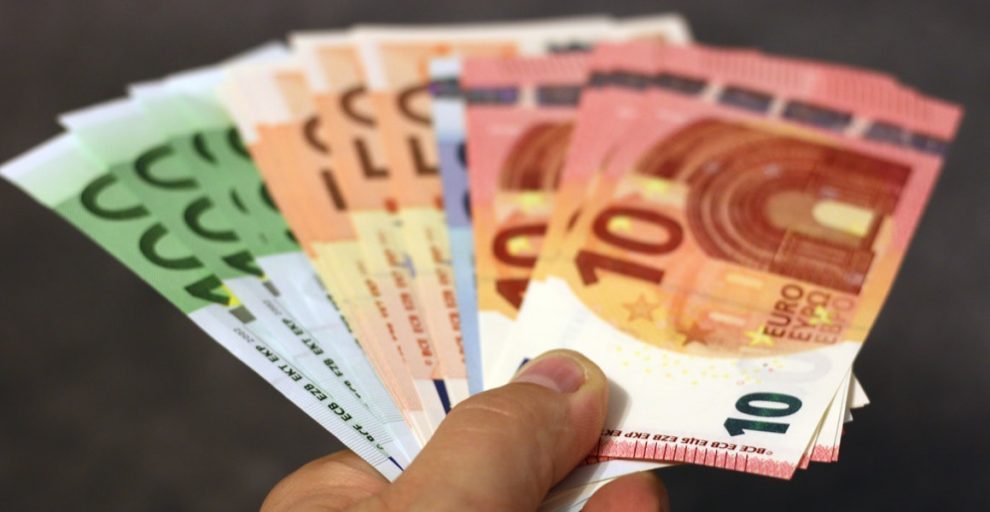Exchange daily course between Bulgarian levs (BGN) and USA Dollars (USD) or European EUR is given on this page.
In first drop down menu choose Russian ruble (RUB). In second choose USA Dollar (USD). If you enter 1 Russian ruble (RUB) for example, you will receive its equivalent in USA Dollars (USD), Euros, turkish Liras, Dinars, Japanese Jean, Rubles etc.
You can enter any arbitrary amount of currencies below. Rates are updated daily by Swiss National Bank.
Date: Sunday 13th of July 2025 09:53:55 AM
You can also convert USA Dollars or Euros to Bulgarian levs (BGN). Insert values of Euros or Dollars, find than opposite values for Levs, Ruble or Euros, in second row and automatically you will get calculated value of another banknotes. The currency data are updated daily. We hope that ratio will be optimal for your business. Enjoy in work and calculations!
The lev – currency of Bulgaria
The lev (Bulgarian: Lev, eva, levove) is the currency of Bulgaria. It is divided in 100 stotinki ( singular: stotinka). In archaic Bulgarian the word “lev” meant “lion”.
Today value of lev is: In 1999, banknotes were introduced in denominations of 1, 2, 5, 10, 20 and 50 leva. 100 leva notes were added in 2003.
Bulgaria became a member state of the European union in 2007. It is classified as an upper-middle-income country by the World Bank. The Bulgarian economy is a free market economy. Economically Bulgaria can be qualified as a developed industrial country and an attractive place for active tourism and sport-lovers because of its incredible natural resourses. The economy of Bulgaria declined dramatically during the 1990s with the collapse of the COMECON system and the loss of the Soviet market, to which the Bulgarian economy had been closely tied. The standard of living fell by about 40%, and only regained pre-1989 levels by June 2004. In addition, UN sanctions against Serbia (1992-95) and Iraq took a heavy toll on the Bulgarian economy.
The first signs of recovery emerged when GDP grew 1.4% in 1994 for the first time since 1988, and 2.5% in 1995. Inflation, which surged in 1994 to 122%, fell to 32.9% in 1995. During 1996, however, the economy collapsed due to the Bulgarian Socialist Party’s slow and mismanaged economic reforms, its disastrous agricultural policy, and an unstable and decentralized banking system, which led to an inflation rate of 311% and the collapse of the lev. When pro-reform forces came into power in the spring 1997, an ambitious economic reform package, including introduction of a currency board regime, was agreed to with the IMF and the World Bank, and the economy began to stabilize.
As of 2007 the economy is growing at a steady pace of about 6% a year with budget surpluses and shaky inflation. Future prospects are tied to the country’s increasingly important integration with the European Union member states. The country is expected to join the Eurozone between 2010 and 2012.
As of 1 January 2008 the income tax for all citizens is set to a flat rate of 10%. This flat tax is one of the lowest income rates in the world and the lowest income rate in the European Union. The reform was done in hope for higher GDP growth and greater tax collection rates. Some called it a “revolution” in taxation, but the changes were met with mild discussions and some protests by affected working classes. The proposal was modified to allow for compensating the perceived losers from the changes in the tax formula.
The corporate income tax is also 10% as of 1 January 2007 which is also among the lowest in Europe. For 2005 Bulgaria’s estimated state revenues totaled US$11.2 billion, and its estimated state expenditures, including capital expenditures, were US$10.9 billion, yielding a surplus of US$300 million. In 2004 revenues totaled US$10.1 billion and expenditures US$9.7 billion, for a surplus of US$400 million.
In the 1990s, Bulgaria moved gradually away from dependence on markets in the former Soviet sphere, increasing its exports to the European Union (EU). In 1999 Bulgaria joined the Central European Free-Trade Agreement (CEFTA), with whose members (Croatia, the Czech Republic, Hungary, Poland, Romania, Slovakia, and Slovenia; Macedonia was added in 2006) it has established important trade relations.
The admission of all but Croatia and Romania to the EU in 2004 reduced the significance of CEFTA trade, however. In 2004 some 54 percent of Bulgaria’s import trade and 58 percent of its export trade was with EU member countries. Bulgaria has bilateral free-trade agreements with Albania, Croatia, Estonia, Israel, Latvia, Lithuania, Macedonia, Moldova, and Turkey. Oslo, standard page which describe conversion Euro in Dollars is Euros to Dollars exchange rate.
Recommendation
-
Recommendation:
















Add Comment